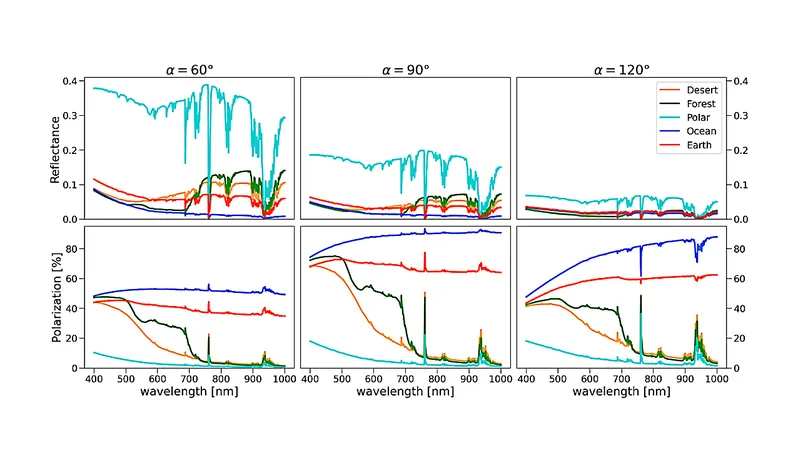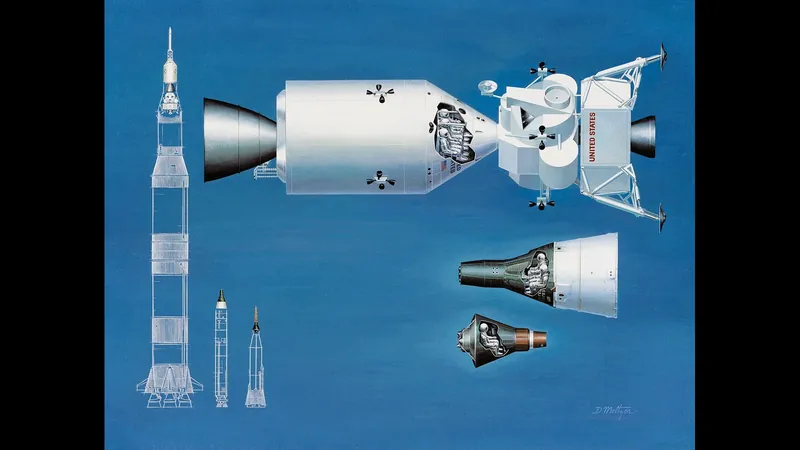
Unlocking the Secrets of Exoplanets: New Insights from Advanced Telescopes
2025-06-06
Author: Nur
Revolutionizing Our Understanding of Rocky Exoplanets
The quest to study nearby rocky exoplanets is on the brink of a major leap forward, thanks to groundbreaking next-generation telescopes like the Extremely Large Telescope (ELT) and the ambitious Habitable Worlds Observatory (HWO) mission concept.
Advanced Modeling Techniques for Enhanced Observations
In a pivotal study, researchers employ an innovative modeling approach to refine the estimates of reflected and polarized light from rocky exoplanets located in the habitable zones of nearby star systems. Through sophisticated 3D radiative transfer simulations, they focus on Earth-like planets orbiting both G-type and M-type stars.
Realism Meets Science: A Closer Look at Cloud Dynamics
These simulations integrate realistic, wavelength-dependent surface albedo maps along with intricate cloud dynamics, showcasing 3D cloud structures and varying cloud properties. Such detailed modeling reflects observations from Earth, moving from simplistic representations to comprehensive models that depict Earth as if it were an exoplanet.
The Importance of Accurate Polarization Models
One of the key findings highlights that using average homogeneous models fails to capture the intricate details of Earth's environmental complexities, especially in terms of polarization. Moreover, simplistic cloud frameworks can severely distort absorption lines at high spectral resolutions, particularly in critical water bands, which could skew our understanding of atmospheric chemical compositions.
A New Standard for Future Observations
The research provides crucial updated contrast estimates for detecting rocky exoplanets around nearby stars, leveraging upcoming observational instruments like ANDES and PCS at the ELT. Significantly, it reveals that previous overestimations of reflected light contrast—by nearly a factor of two—have occurred when relying on oversimplified models.
Towards a Holistic Understanding of Exoplanet Atmospheres
Instead, the study advocates for focusing on measuring fractional polarization within continuous and high-contrast, high-resolution spectra as a more effective means of characterizing Earth-like exoplanets. These refined estimates are not just academic—they are essential in shaping the upcoming ELT instruments and the vision behind the HWO mission.
The Team Behind the Research
This groundbreaking work is powered by a collaborative team of scientists including Giulia Roccetti, Michael F. Sterzik, Julia V. Seidel, Claudia Emde, Mihail Manev, and Stefano Bagnulo, who are setting the stage for a new era in exoplanet exploration.



 Brasil (PT)
Brasil (PT)
 Canada (EN)
Canada (EN)
 Chile (ES)
Chile (ES)
 Česko (CS)
Česko (CS)
 대한민국 (KO)
대한민국 (KO)
 España (ES)
España (ES)
 France (FR)
France (FR)
 Hong Kong (EN)
Hong Kong (EN)
 Italia (IT)
Italia (IT)
 日本 (JA)
日本 (JA)
 Magyarország (HU)
Magyarország (HU)
 Norge (NO)
Norge (NO)
 Polska (PL)
Polska (PL)
 Schweiz (DE)
Schweiz (DE)
 Singapore (EN)
Singapore (EN)
 Sverige (SV)
Sverige (SV)
 Suomi (FI)
Suomi (FI)
 Türkiye (TR)
Türkiye (TR)
 الإمارات العربية المتحدة (AR)
الإمارات العربية المتحدة (AR)